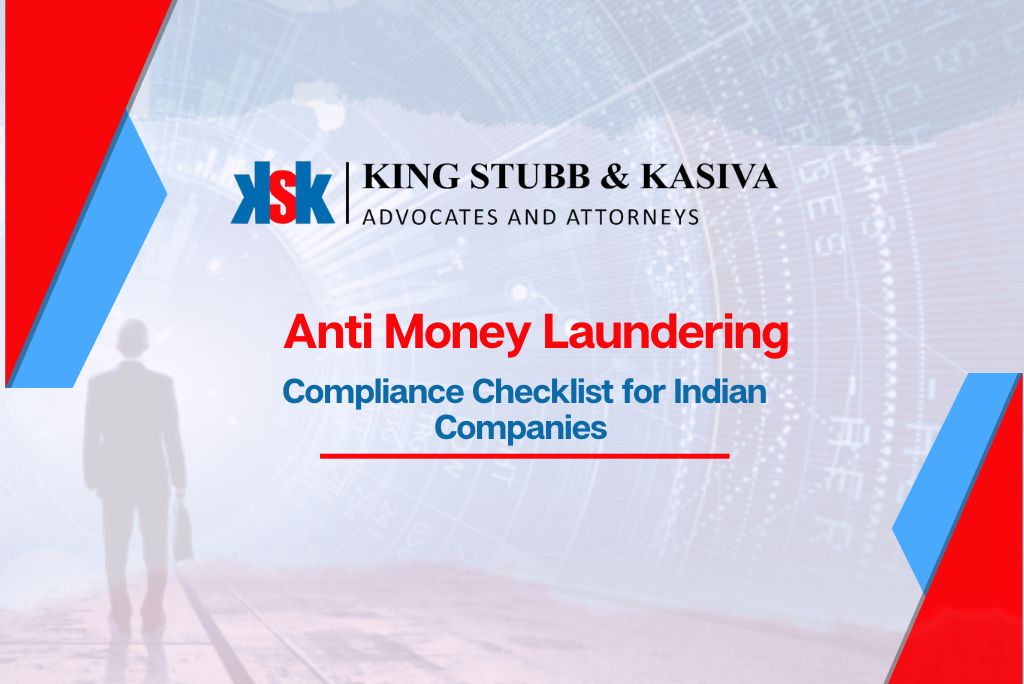
By - King Stubb & Kasiva on January 27, 2023
Money laundering refers to an operation of unlawful concealment of the source of money which has been obtained from sources prohibited by law such as drug trade, gambling, illegal trafficking etc.
The anti-money laundering laws in India and anti-corruption laws in India prohibit money laundering and in furtherance of the same, the Prevention of Money Laundering Act, 2002 also known as PMLA had been introduced in the Indian legal system which came into force on 1st July, 2005. The anti-money laundering laws in India have also been published in the official gazette of India by the Ministry of Finance.
The PMLA provisions have clearly stated that all banking companies, financial institutions including housing finance organizations, cooperative banks and different intermediaries which comprise of being a stakeholder of the Security and Exchange Board of India are mandated to maintain a record of all transactions they undertake including the nature, process and amount of transaction as specified in the rules of PMLA. According to Section 3 of the Act, the meaning of transactions has been taken in a wide sense including even suspicious transactions which may be in the nature of cash or not.
Money Laundering is one of the most widespread financial crimes in the global scenario which has close associations with the drug trade, illegal cross-border weapon transactions, and other crimes.
The Anti-Money Laundering compliance checklist acts as a boon to protect the moral interests of society and protects the shareholders’ value and reputation of a brand in the security market, reduction of risk exposure to the company, avoidance of embezzlement of company capital and insider trading.
The upside risk of non-compliance of anti-money laundering laws in India may lead to investors’, shareholders’ and customers’ distrust in the company and also disturb client relations. Therefore, anti-money laundering measures are highly important in the present-day economic setup.
India follows a strict anti-money laundering compliance checklist prepared with the aid of the Financial Action Task Force on Money Laundering in 1989 to which India became a member in 2010.
In India, the prohibition of money laundering activities is laid down majorly by two statutes, the Prevention of Money Laundering Act, 2005 and the Narcotics, Drugs, and Psychotropic Substances Act, 1985. A broad framework of laws preventing the activity of money laundering in India has been laid down by PMLA along with various additional regulations of RBI and SEBI in order to increase the ambit of laws in India.
According to the Prevention of Money Laundering Act, 2005, the main objectives of the act include prevention and control of money laundering, confiscation and seizing the assets, property and money acquired through illegal sources of money, and dealing with additional and ad-hoc issues raised through the laundered money.
The Financial Intelligence Unit of India, created through the operation of the act is the primary body governing the regulations and efforts of the act and suspect financial transactions pertaining to the laundered money.
The Enforcement Directorate (ED) has also been formulated in the year 2005 by the Government of India in order to strengthen the anti-corruption laws in India and anti-money laundering laws in India and attack the money laundering activity from both direct and indirect ends.
The Security and Exchange Board of India has laid down various guidelines to act as a checklist for the prevention of money laundering in the country.
The compliances can be sectioned into two sub-types which are:
One-time or periodical compliances refer to the ones non-recurring in nature and include compliances such as:
Continuous or ongoing compliances are those that are recurring in nature and need to be fulfilled in a periodic and frequent manner, these include:
There are several other procedural compliances. like training policies for staff, and investor education policies that are needed to be undertaken by the company in order to secure a medium of anti-money laundering framework and comply with the laws of the land.
The checklist created for anti-money laundering activities has paved the way for companies that are unaware of the laws and compliances governing the present sector. The laws laid down by the SEBI and PMLA have also aided in the control of the rampant money laundering that existed earlier. The cross-jurisdictional issues faced due to the money laundering activities have also been brought into check by the norms laid down by RBI and SEBI.
AML stands for “Anti-Money Laundering” and KYC is known for “Know Your Customer.” Compliance with these terms is mandated by both global and local authorities.
The four pillars of an effective AML are designation of a compliance officer, development of Internal Policies, independent testing and auditing of data and deployment of an in-depth assessment.
AML compliance refers to the process of background screening and ongoing monitoring of customers to identify and eliminate any suspicious activity.